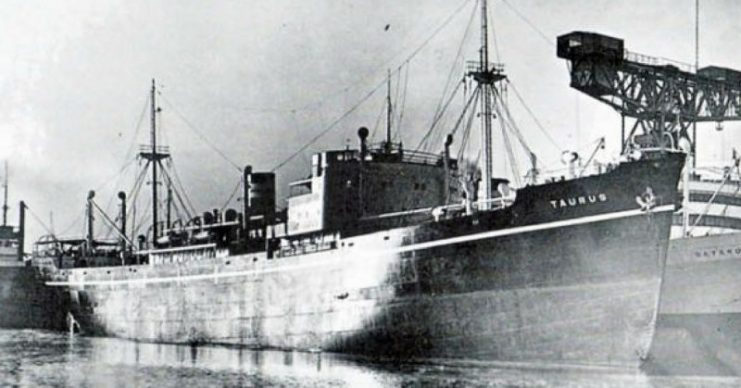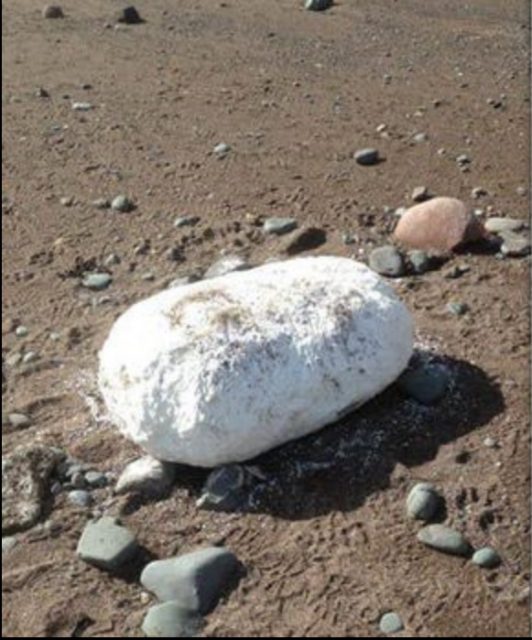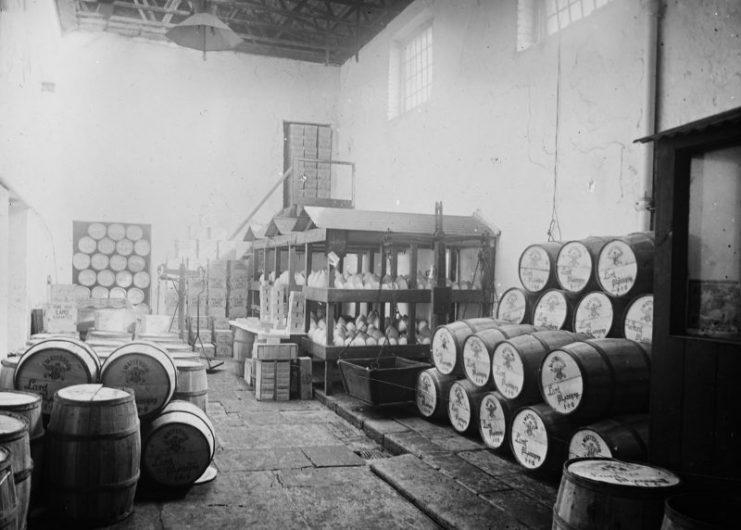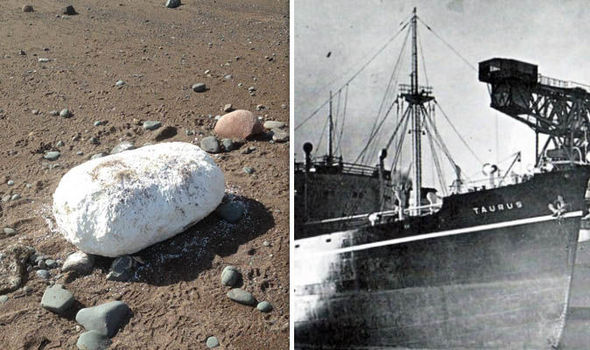For many people around the world, the years of the Second World War were marked by both periods of perfect tranquility, and periods of sudden violence, horrific fighting, and fear. The after-effects of such events carried over into the years after the war as artifacts and mementos of combat would sometimes appear out of nowhere, left over from those darker times.
One such weird resurfacing is the occasional barrel-shaped blocks of lard that every so often washes up on the shores of Scotland’s north-east coastline.
They come from the wreck of the MS Taurus, a Norwegian merchant ship sunk by the Luftwaffe during the war. The Taurus is thought to have been wrecked off the coast near Johnshaven, and periodically after big storms, its contents could often be seen floating on the surface of the sea and many washing ashore.

It’s these peculiar events that stir up the memories common to a coastal community.
“My mum told me about the barrels washing in in 1941, and of the villagers going down the beach and helping themselves,” Joann Beattie, a resident of Johnshaven, said. “There used to be lots of things washed up between here and Gourdon. I have a brass incense burner that washed ashore from the Balmoral.”

Sandy Pittendreigh said he was four when the wartime lard first came ashore at Johnshaven.
“I seem to recall barrels being opened by a group of local fishermen, at the head of the dock at the bottom of the lane, down from the Masons’ hall where I lived in 1941,” he said. “The men divided the lard up into large chunks, which they gave to anyone who wanted it. I was told later that I came home in a bit of a mess of lard clutching my prize.”

The unusual lard deposit has naturally produced some peculiar behaviour and memories over the years. For instance, the inhabitants of the Mearns coastline, who in the 1940s would scrape it away and use it to fry their food, or how the fishermen in the area would prefer the waters close to the wreck because the fish there had become bloated by feeding off the fat. After a storm in the late 1960s or early 1970s, the lard came up on shore again, and the Scottish National Heritage staff from St Cyrus remember the lard in the 1980s as well. They said that the lard was still a brilliant white.
“I’d never seen anything like it,” said Angus McHardy, a retired fisherman remembering the 1940s.
More recently, some rock hard lumps of lard washed ashore in 2013, when the shipwreck came apart in a powerful storm.
Angus McHardy, a local resident and retired fisherman, said he remembers similar events in the in early 1940s.
“I’d never seen anything like it,” he said. “There was quite a lot washed up at St Cyrus and beyond, not quite to Montrose. Some barrels were complete and others were just lumps. People collected it. My grandma boiled it up to get the sand out. It was great because we couldn’t get fat during the war”.
“I used to see the convoys for the merchant ships on my way home from school. The Germans attacked the convoys at the same time every night.”
“It’s given us some interesting sights recently on the reserve: I’m sure there have been people wondering what on earth has washed up on the beach,” said Therese Alampo, the reserve manager at St Cyrus. “The lard was covered in the largest barnacles I’ve ever seen. Animals, including my dog, have certainly enjoyed the lard, and it still looks and smells good enough to have a fry up with.”
